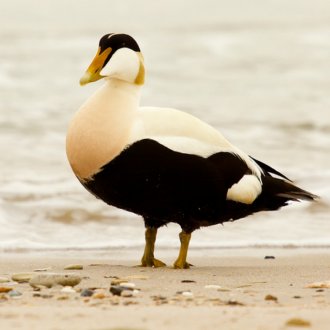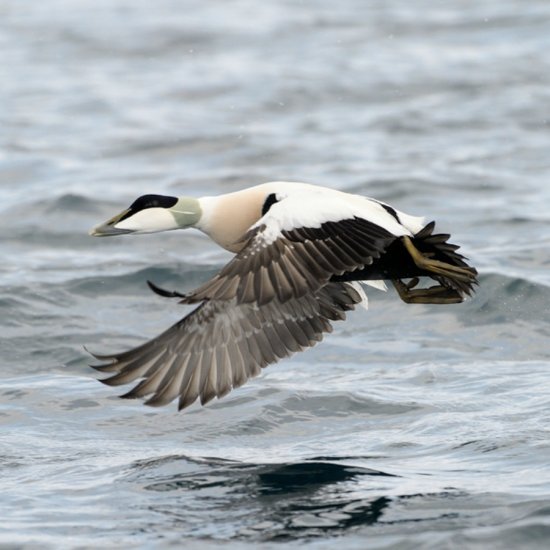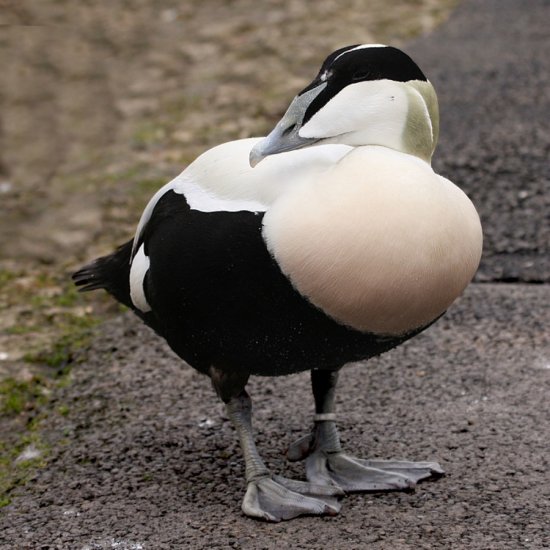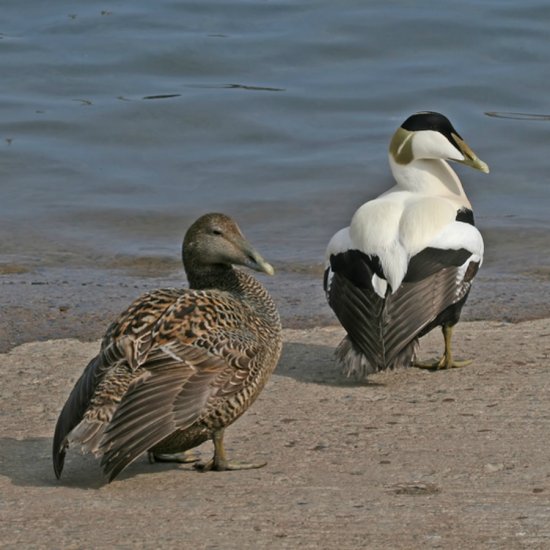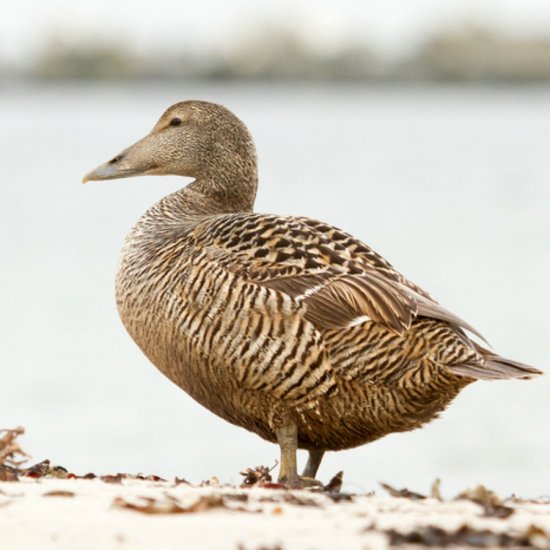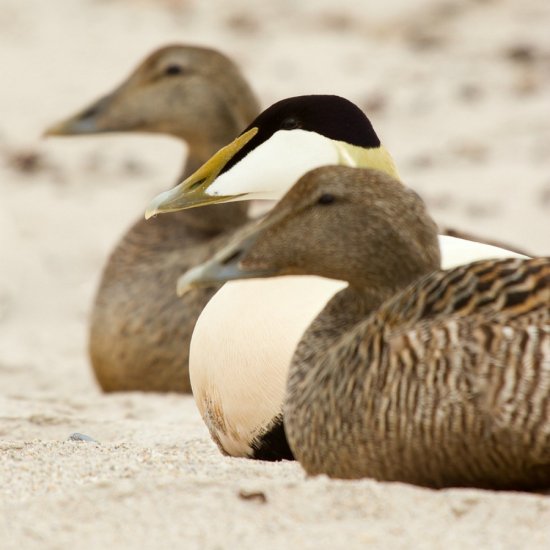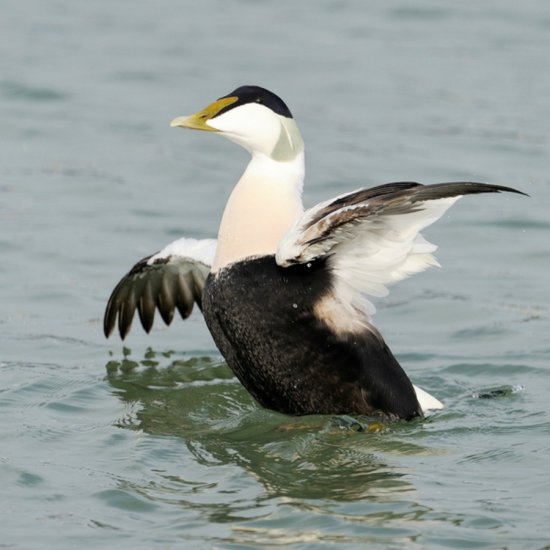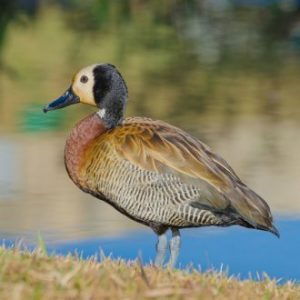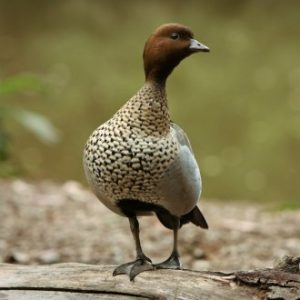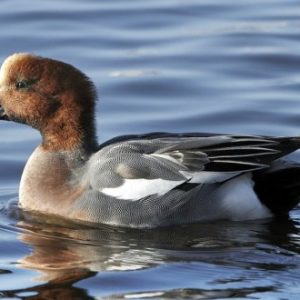Common Eider Ducks, Somateria mollissima, are large and exquisite sea ducks. They are native to North America and are rare to find in aviculture.
Common Eiders are bulky and hefty-looking ducks. They have a very characteristic wedge-shaped bill, with feathering that extends along the lower side of the bill. In breeding plumage, the male has a striking black and white coloration with a green sheen on the nape of the neck. The female is more brownish but also has the typical Eider head shape with a large wedge bill. Males in eclipse and juveniles look very much like females.
These are confident birds and are often quite friendly and approachable by humans even in the wild.
Range: Common Eiders breed in the Arctic and northern regions of North America and eastern Siberia. In winter, they migrate to more southern locations but stick to the cooler, northern coastlines.
Habitat: These are coastal sea ducks and find food by diving in coastal waters. They are strong flyers as well, flying at speeds up to 70 mph. They also use their wings to swim underwater and can fly straight up out of the water from a dive.
Status in the Wild: Common Eider Ducks are currently abundant in the wild.
Status in Aviculture: Although these birds are hardy and adaptable, they do need space and a large body of water to thrive. They are relatively hard to find in captivity.
Breeding: Breeding is monogamous and occurs in the spring. Nesting is usually in flocks, as females cooperate in raising and feeding the young once they hatch. Nests are on the ground and are usually situated in grassy or rocky cover. Nests are padded and lined with valuable down as well as plant matter. Clutch usually consists of 3-5 large, up to 3 inches long, light olive or brownish-olive colored eggs. Incubation takes 25-30 days. Breeding Common Eiders in captivity can be tricky.
Lifespan: Like most sea ducks, Common Eiders are not easy birds to keep in captivity; their lifespan is often under 4 years of age.
Size: Common Eiders are the largest wild North American duck species. They weigh between 4.9 and 5.2 pounds. The wingspan is 35-42 inches, and they measure 23-27 inches in length.
Housing Requirements: Common Eiders are ducks for the serious aviculturist and demand experience. They are winter-hardy, but these birds also need a significant water source to thrive.
Diet: The wild diet of the Common Eider is mostly sea-based. Common Eiders can dive 33-60 feet and can gather shellfish – both crustaceans and mollusks – from the seafloor. They swallow them whole and can break the shells within their gizzards. Common Eiders also consume vegetable matter, seaweeds, and even fish on occasion. Mimicking this diverse and protein-rich diet would be necessary when keeping these birds in captivity. Mazuri sea-duck diet is available commercially.
Miscellaneous Notes: The down of the female Common Eider – eiderdown – is considered to be the softest and most insulating in the world. These ducks were once hunted for their down, but the industry has changed to be more accommodating to the duck’s well-being and sustainability. The down is now collected from the nests soon after the ducklings have exited. To gather 1 pound of down, 35-40 nests must be visited.

